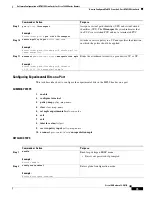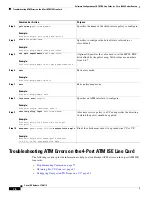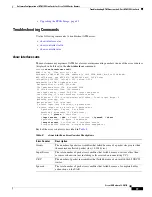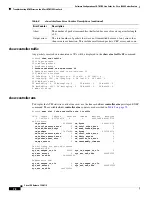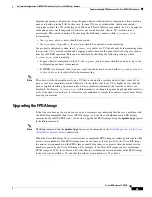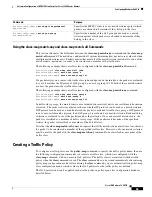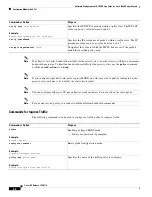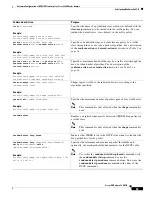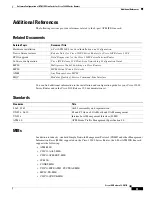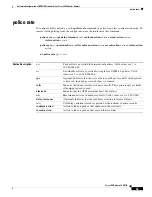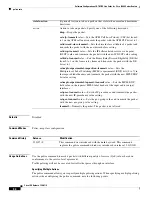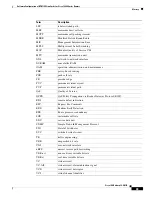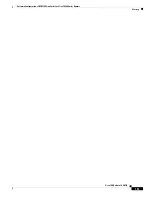
Software Configuration of ATM ISE Line Cards for Cisco 12000 Series Routers
Configuring Modular QoS CLI
86
Cisco IOS Release 12.0(27)S
The syntax of the
policy-map
command is:
policy-map
policy-name
no policy-map
policy-name
The syntax of the
class
command is:
class
class-name
no class
class-name
In addition to any user-defined classes, a pre-existing class named class-default exists. All packets that
do not match any of the user-defined classes belong to class-default.
Commands for Egress Traffic
The following commands can be used to configure a traffic policy for egress traffic:
Command or Action
Purpose
enable
Example:
Router> enable
Enables privileged EXEC mode.
•
Enter your password if prompted.
configure
terminal
Example:
Router# configure terminal
Enters global configuration mode.
policy-map
policy-name
Example:
Router(config)# policy-map policy1
Specifies the name of the traffic policy to configure.
class
class-name
Example:
Router(config-pmap)# class class1
Router(config-pmap)# class class-default
Specifies the name of a predefined class, which was defined with the
class-map
command, to be included in the service policy. You can
include the default class, class-default, in the traffic policy.
bandwidth
{
bandwidth-kbps
|
percent
percent
}
OR
bandwidth remaining percent
percent
Example:
Router(config-pmap-c)# bandwidth percent 20
Router(config-pmap-c)# bandwidth remaining
percent 4
Specifies a minimum bandwidth guarantee to a traffic class.
A minimum bandwidth guarantee can be specified in kilobits per
second (
bandwidth-kbps
) or as a percentage of the overall available
bandwidth (
percent
percent
). In this case, the bandwidth specified
cannot exceed the available bandwidth remaining after the priority
class is accounted for.
Alternatively, the minimum bandwidth guarantee can be based on the
remaining bandwidth available (
remaining percent
percent
). If
there is no available bandwidth, then the class will receive no
bandwidth, regardless of the percent specified.




